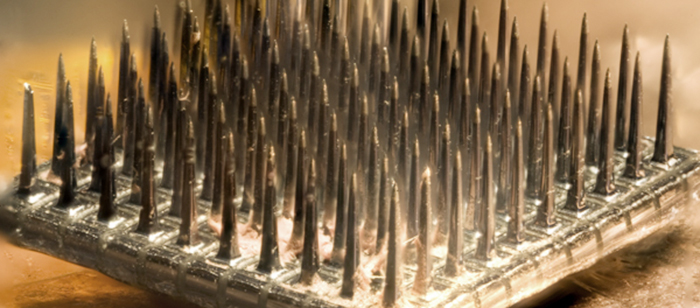
CSEE Professor Gymama Slaughter received a two-year research research award from the National Science Foundation to develop and evaluate nanoelectrode probe arrays to better detect and extract intracellular signals. Data from these signals will help in restoring functional loss of limb control of individuals with spinal cord injury or stroke.
Conventional neural interfaces consist of microelectrode arrays (MEAs) that are in close contact with neurons to record extracellular potential or stimulate electrical activity. However, due to the relative large microelectrode size, these MEAs are not capable of extracting intracellular signals, which is of particular interest in restoring functional loss of limb control of individuals with spinal cord injury or stroke. MEAs electrophysiological recordings still faces two major challenges, the inherent noisy data and the limited spatial resolution. These problems especially limit the accuracy and reliability of the movement parameter due to the unreliable spike recording for long durations.
The objective of this research is the fabrication and characterization of independently addressable nanoelectrode arrays (NEAs) and nanoelectrode probe arrays (NEPAs) for high-throughput recording of extracellular and intracellular electrophysiological measurements of neural activity. These will allow, for the first time, simultaneous extracellular and intracellular characterization of large number of neurons while maintaining high spatial resolution, high signal-to-noise ratio, and excellent selectivity of neural interfaces.
The NSF award, a novel parallel extracellular and intracellular nanoelectrode and nanoelectrode probe array for high throughput electrophysiological recording, will provide over $150,000 over the next two years to fund Dr. Slaughter and her students research on this project.